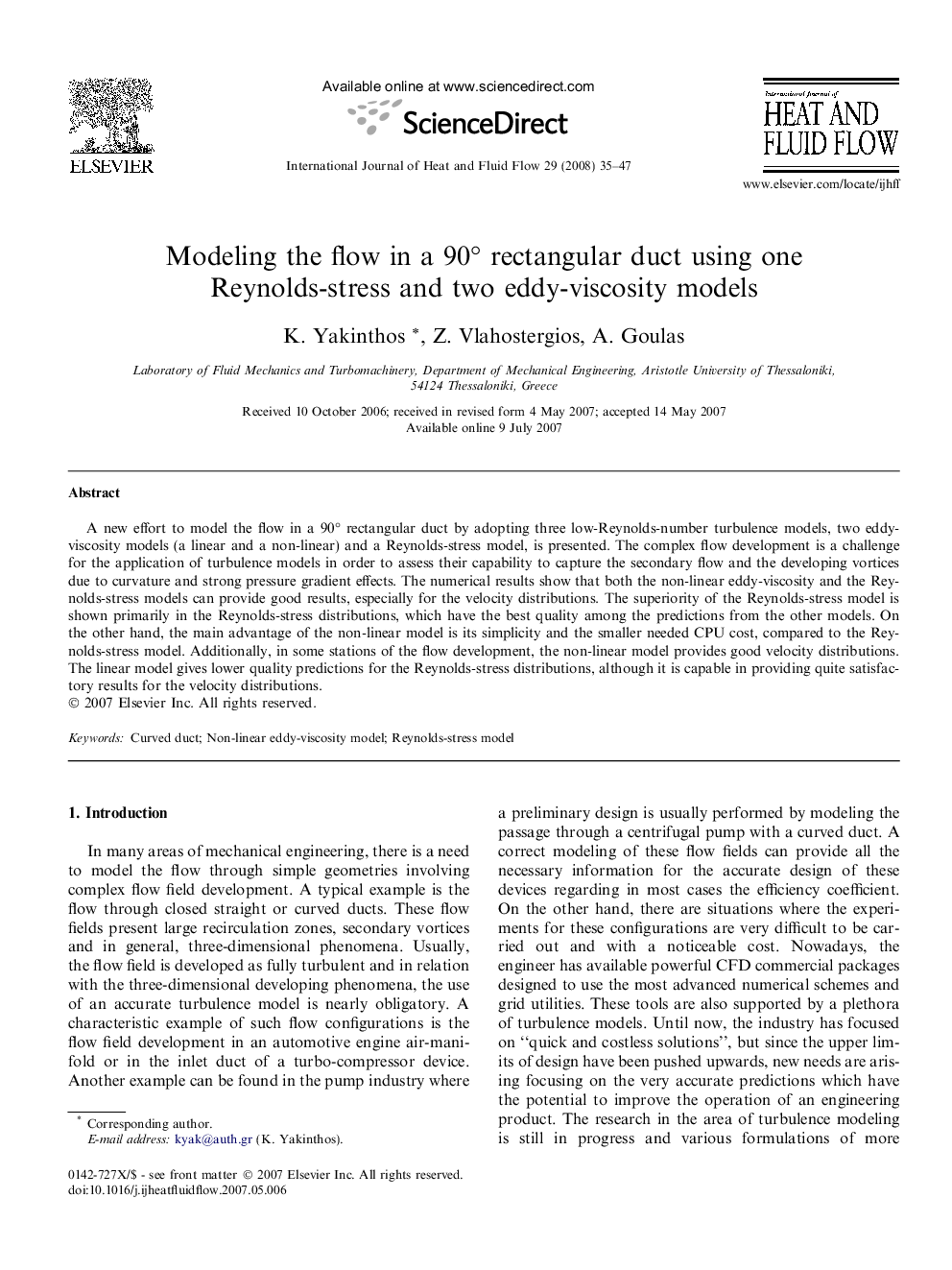| Article ID | Journal | Published Year | Pages | File Type |
|---|---|---|---|---|
| 656049 | International Journal of Heat and Fluid Flow | 2008 | 13 Pages |
Abstract
A new effort to model the flow in a 90° rectangular duct by adopting three low-Reynolds-number turbulence models, two eddy-viscosity models (a linear and a non-linear) and a Reynolds-stress model, is presented. The complex flow development is a challenge for the application of turbulence models in order to assess their capability to capture the secondary flow and the developing vortices due to curvature and strong pressure gradient effects. The numerical results show that both the non-linear eddy-viscosity and the Reynolds-stress models can provide good results, especially for the velocity distributions. The superiority of the Reynolds-stress model is shown primarily in the Reynolds-stress distributions, which have the best quality among the predictions from the other models. On the other hand, the main advantage of the non-linear model is its simplicity and the smaller needed CPU cost, compared to the Reynolds-stress model. Additionally, in some stations of the flow development, the non-linear model provides good velocity distributions. The linear model gives lower quality predictions for the Reynolds-stress distributions, although it is capable in providing quite satisfactory results for the velocity distributions.
Related Topics
Physical Sciences and Engineering
Chemical Engineering
Fluid Flow and Transfer Processes
Authors
K. Yakinthos, Z. Vlahostergios, A. Goulas,
